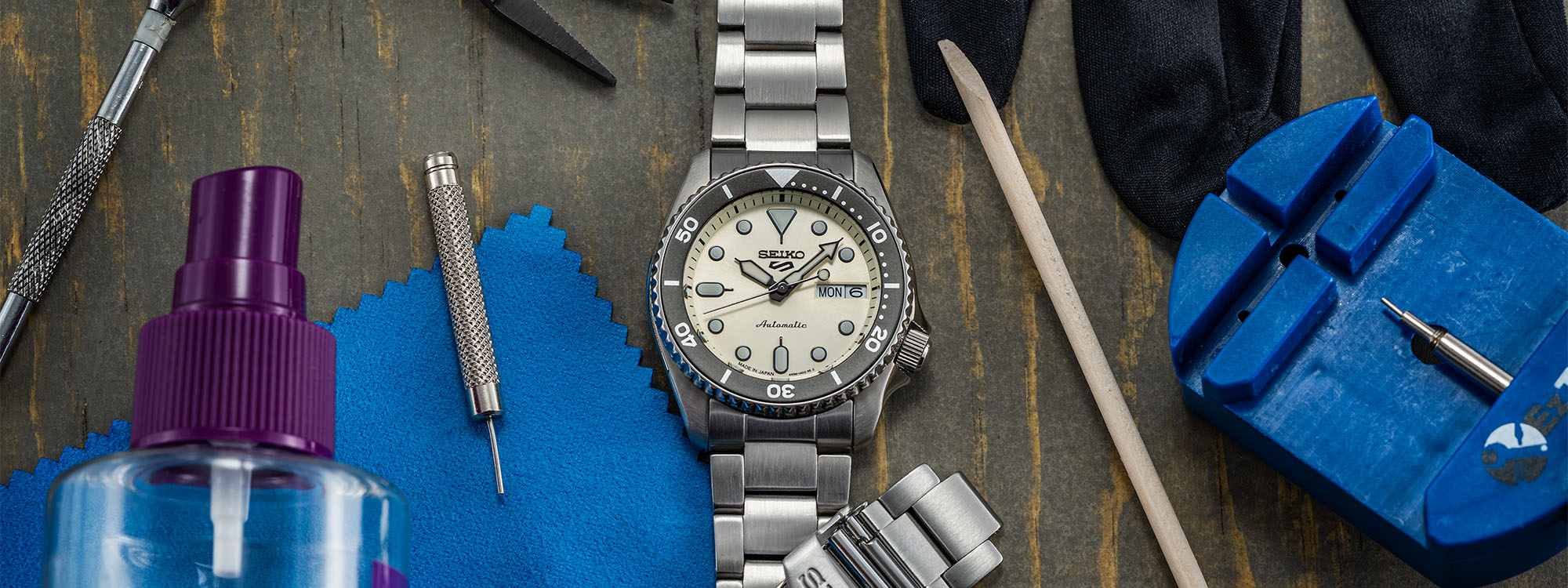When you’re starting or building upon a watch collection, keeping those watches clean is probably a matter to which you rarely give much thought on a day-to-day basis. Of course, there’s always the least time-intensive option, outsourcing your watch’s semi-regular cleaning to your local watchmaker or watch repairer when you send the timepiece in for its recommended technical maintenance. But if you’re interested in keeping your timepieces in tip-top condition between services — and especially if you have notions of perhaps selling or trading any of them for the maximum return — there are some simple steps you can take on your own, for minimal cost, that can ensure your watches are maintained at a level that’s both presentable and potentially sellable.

Watches, after all, are not only luxury objects; they are also items that are worn regularly, day after day in some cases, like a pair of boots or shoes, or an overcoat. And like those items, they encounter all kinds of conditions based upon the wearer’s lifestyle, occupation, and recreational pursuits. Watches are also worn right against the skin, with all of the exposure to sweat, dirt, and unexpected atmospheric splatter that implies. Thus, regular cleaning of your watches should be considered a regular chore in the cycle of life, like doing the laundry or washing your car. The go-to shortcut of wiping the watch’s crystal with an untucked shirt tail or handkerchief — we’ve all done it — isn’t going to cut it.

What you’ll want to have on hand: a toothbrush with soft bristles, cleaned and dried, preferably a used one that isn’t going back in your mouth or anyone else’s; a supply of sanitary antibacterial wipes (the type you used to frantically wipe down all your groceries during the panicked early days of COVID); dishwashing soap and warm water; a clean microfiber cloth; several wooden toothpicks; a loupe or magnifying glass to inspect the watch up close; and a spring bar tool to remove the bracelet. You’re likely to have everything on the list, except perhaps for this last tool, already in your household. (All the directions in this article, by the way, are for watches that have a water-resistance of at least 50 meters.)
When you’re ready to clean your watch, assemble your “cleaning kit” tools on a clean surface, wash and dry your hands, and for the first step, use the loupe or magnifying glass to look closely at key parts of the watch that are likely to have acquired traces of debris: the grooves of the crown and bezel, the edges of the lugs and bracelet links, the seam between the bezel’s inner edge and the crystal. (If your watch has a screw-down crown, makes sure it's screwed in before applying anything moist or wet to the case.) If you find any chips or scratches on the crystal itself, you’ll have to abandon your own cleaning plans and take the watch to a professional for servicing, and possibly even replacement parts, before having it cleaned. If the crystal is clear of such damage, however, you can proceed with the next step.

The parts of the watch where dust and other detritus tends to accumulate is, as you might expect, the areas that are hardest for the wearer to access on a regular basis — namely, that shrouded no-man’s land between the inner surfaces of the lugs and the bracelet (or strap) surface that rubs up against it. To access these spots, you’ll have to remove the bracelet with the spring bar tool and set it aside while you set upon the watch case with your primary cleaning tools: the sanitary wipes, toothpicks, and toothbrush, with the microfiber cloth as the final stage.

Start with the sanitary wipes, gently rubbing one against the surfaces of the case and crystal to dislodge dirt; use as many as are necessary to give the watch a nice, polished finish. But what, you may ask, about the little nooks and crannies in something like the serrated edge of a diver’s bezel? That’s where the little wooden toothpicks come in; snap off the sharp points and wrap them inside a wipe to create an edge that can reach inside these hard-to-access notches. If this method hasn’t dislodged all of the embedded dirt, it’s time to deploy the toothbrush. Run the bristles gently but firmly into the problem areas. Take extra care with this step if your watch case is made from a precious metal like gold, which is softer and more prone to scratching.

Your watch’s metal bracelet can accumulate even more stubborn, hard-to-reach debris than the case, thanks to its multiple links and the crevices they create. Before tackling them with the wipes, toothpicks, and brushes as described above, it’s a good practice to help loosen or dislodge some of the bracelet’s surface detritus by soaking it in a bowl of warm soapy water for a few minutes, then patting it dry in the fold of a paper towel. If your watch is on a leather strap rather than a bracelet, you’ll obviously want to skip the immersion in water and instead use either one of the sanitary wipes, or a cloth that is only slightly damp, to wipe down its surfaces.

Apply the finishing touches by gently drying the case and bracelet with the microfiber cloth before reassembling the timepiece and fastening it back to your wrist at leisure. Regular wipe-downs of the watch with a sanitary wipe, without the rigamarole of disassembling it, will serve to preserve its exterior good looks until the next big cleaning. For a minimal time and cost investment, you’ve made your timepiece not quite as good as new, but much closer to its original pristine condition than it was before you last took it off. It’s not exactly overhauling a movement, but as DIY horological projects go, it’s one in which a watch collector can take a measure of pardonable pride.





















































0 Comments